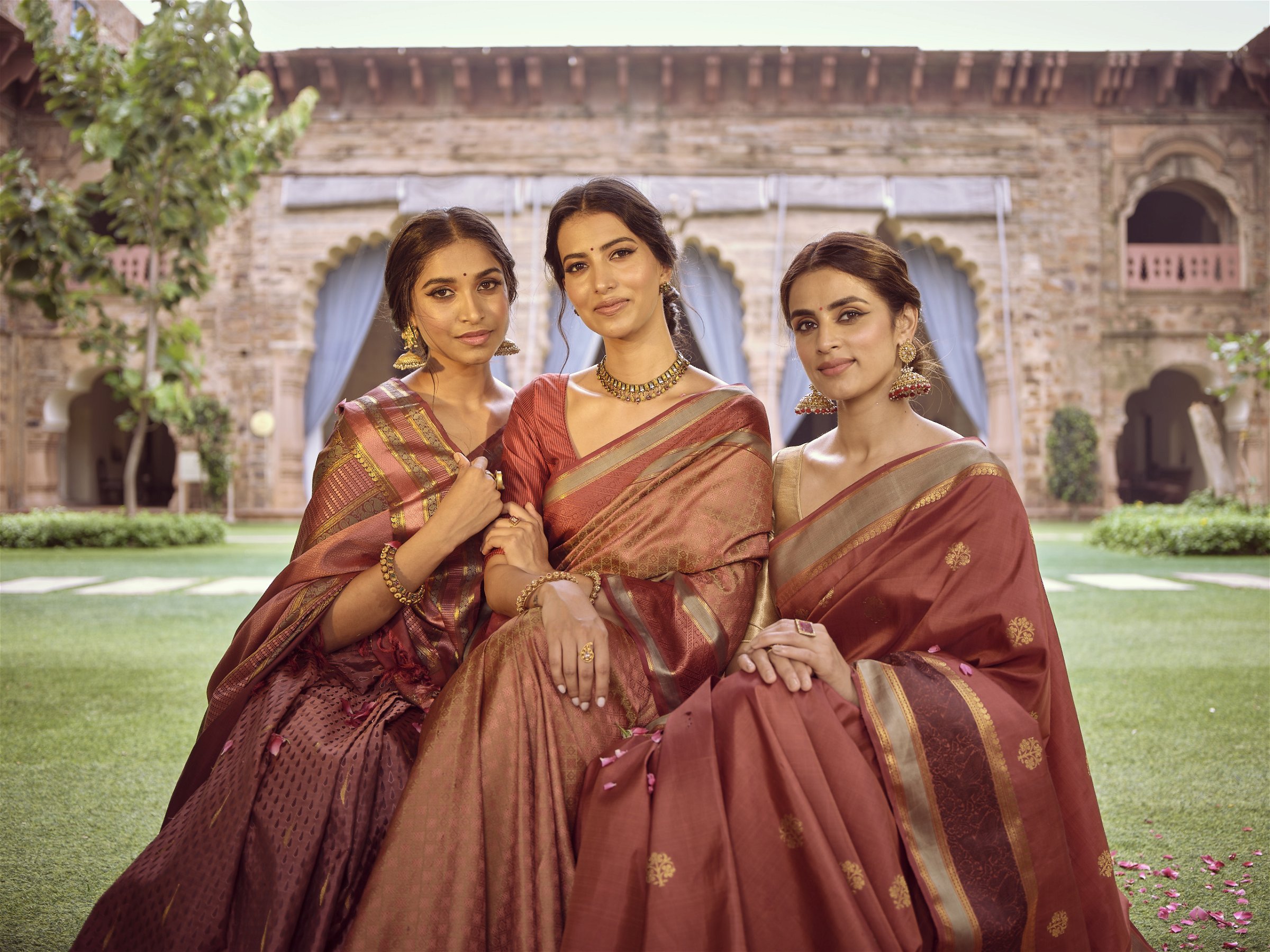There’s a certain pride in owning a genuine, handwoven Kanchipuram silk saree. Yet, with the numerous varieties in the market, how do you identify an original that’s been handcrafted by Kanchipuram’s gifted artisans?
Handwoven Kanchipuram silk sarees are the products of superior fabrics and craftsmanship. However, with synthetic fabrics and machine-made sarees increasingly being passed off as originals, it’s important to be aware of what makes a handloom Kanchipuram silk saree inimitable. Here’s a handy list of what to look out for.
1. The fabric :
Kanchipuram silk sarees get their smooth texture and luminous quality from mulberry silk. Natural silks that are extracted from silkworms are of four kinds – tussar, muga, eri and mulberry. Each variety is produced using different species of silkworms and plants, resulting in unique characteristics. Mulberry silk gets its name from the plant on which the silkworms are reared, and is very smooth and supple. Mulberry threads are also longer and more refined.

2. The hand feel :
Handwoven Kanchipuram silk sarees have a distinctly smooth texture, since they are woven using mulberry silk. Handloom silk sarees are more flowy and easier to drape. In contrast, sarees that have been made on the powerloom tend to be stiff, because the threads of these machine-made sarees are very tightly woven. Over time, handwoven Kanchipuram silk sarees remain flowy whereas powerloom Kanchipuram sarees become more rigid.
Another method of testing the silk is to gently rub the silk between your fingers. Real silk is organic, and hence tends to become warm. On the other hand, synthetic silk will not absorb the heat from your fingers, thereby remaining cool to the touch.
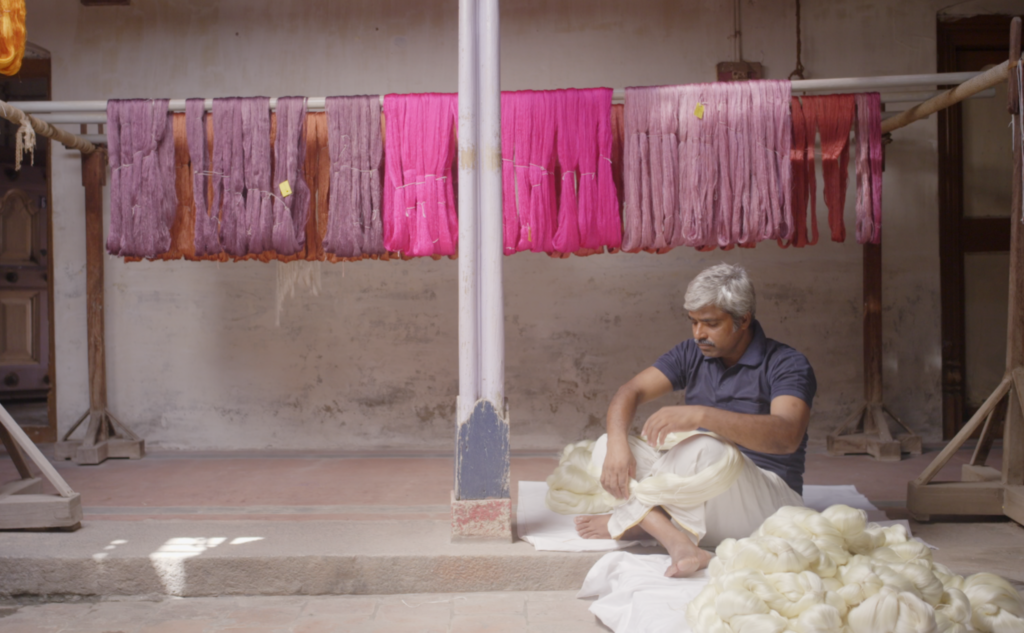
3. The shine :
Kanchipuram sarees that have been made using high-quality silk have a warm glow. Synthetic silk sarees have a uniform silver sheen; in comparison, real silk reflects light at certain angles. Pure mulberry silk has a natural glow that becomes more pronounced when the fabric is dyed.
The finest handwoven Kanchipuram silk sarees also use high-quality zari. To create the zari, red silk threads are wound in silver and then electroplated with gold. This adds to the shimmer of the silk saree.
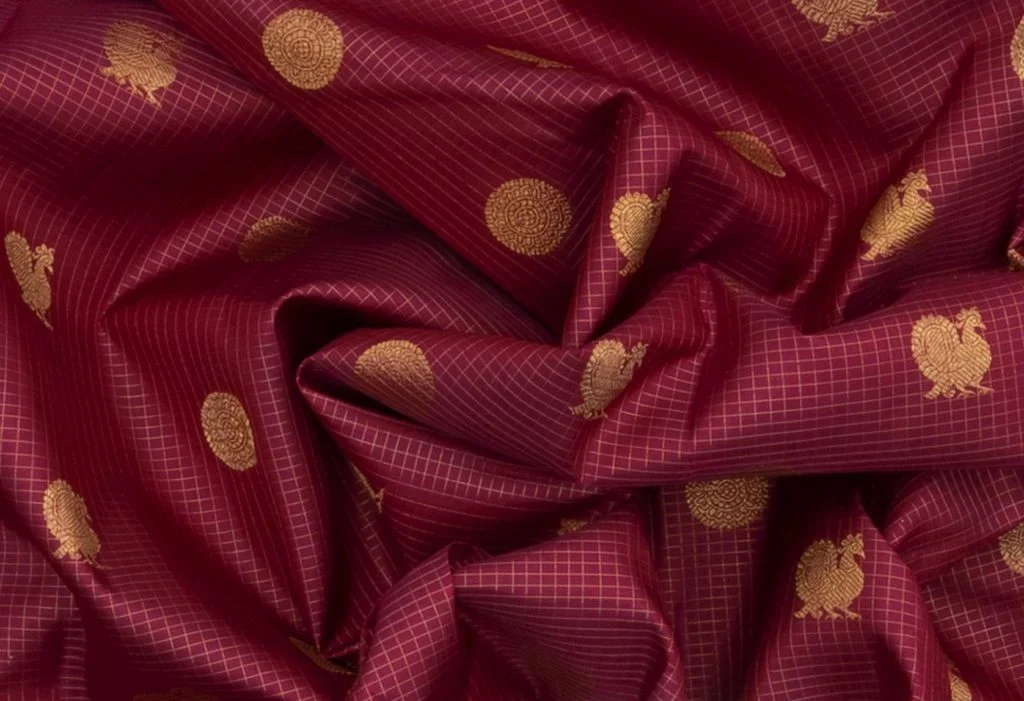
4. The signs of craftsmanship :
Authentic Kanchipuram silk sarees are woven by master weavers on the handloom, using skills that have taken decades to learn. These sarees have several telltale signs of being crafted by hand. Firstly, because they’re made by people and not machines, handwoven Kanchipuram silk sarees have minor variations in the patterns. You might even spot places where snipped threads were expertly joined by hand.
Another indicator that a saree has been handwoven can be found along the borders. Weavers fasten the borders of the saree to the loom using a ‘temple’ – a piece of wood with small iron pins at both ends. This helps keep the fabric taut while weaving. Once the saree weaving is complete, the weaver gently detaches the temple, but the miniature pinholes remain on the saree. This is another sign that experienced customers look for while buying a handloom saree.
Read more about how to identify a handloom Kanchipuram silk saree in this blog.
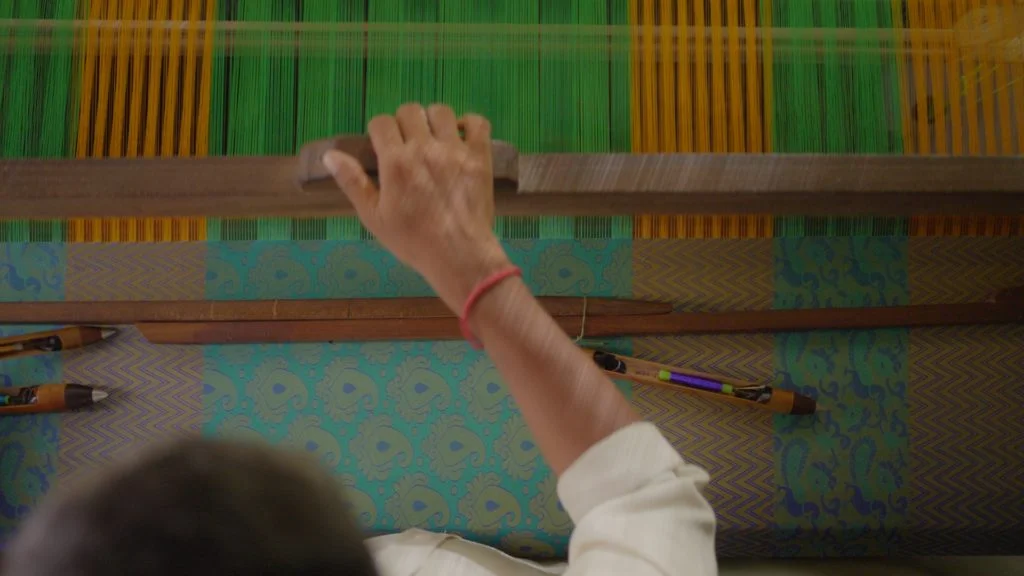
5. The Korvai technique :
Korvai silk sarees represent the highpoint of the Kanchipuram weaving tradition. Two expert weavers work side by side on the handloom to create a Kanchipuram korvai silk saree. One weaver works on the body of the saree, while the other weaves the border and pallu separately. These parts are then sewn together; the body and border are attached along the weft, while the contrast pallu is interlocked with the body along the warp. The process is called petni, and if you look on the reverse side of the pallu, you’ll see the threads that form the interlock.
The Korvai style of weaving creates stunning contrasts; the body sports entirely different colours and designs from the border and pallu. This can only be achieved on the handloom, not the powerloom. As a result, when you buy a Kanchipuram korvai silk saree, you can be sure that it’s handwoven.
If you’d like to know more about Kanchipuram korvai silk sarees, this blog is a great place to start.
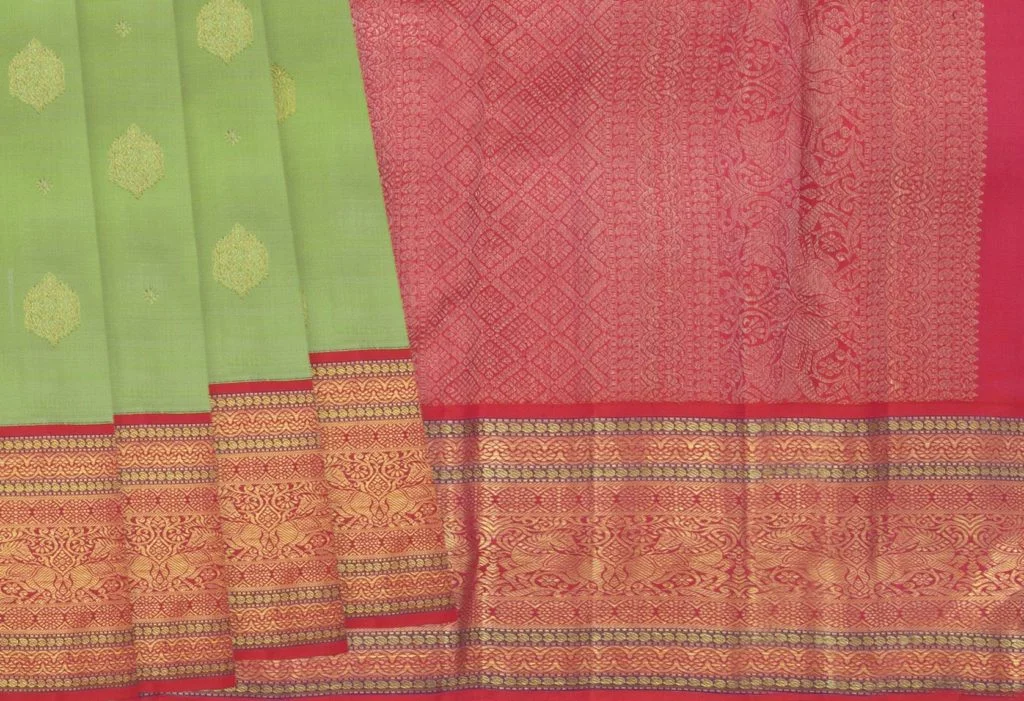
The finest Kanchipuram silk sarees are made from meticulously-handpicked materials and woven by hand. Crafting the saree is an art, and selecting it requires a keen eye. Yet, like all well-chosen things, the satisfaction of owning one only grows deeper as the years go by.

